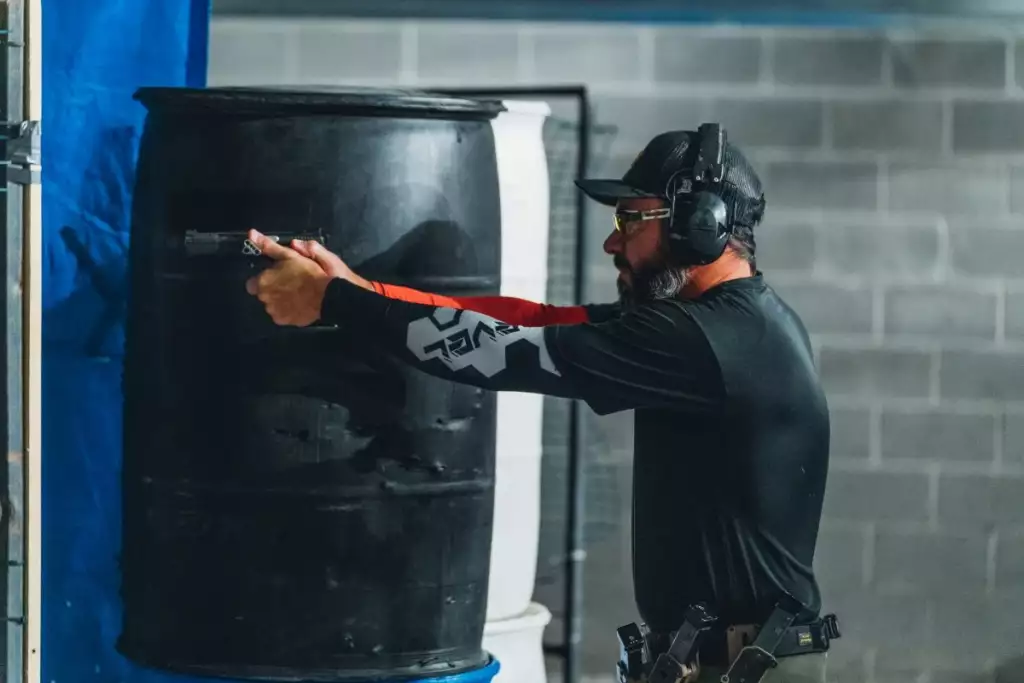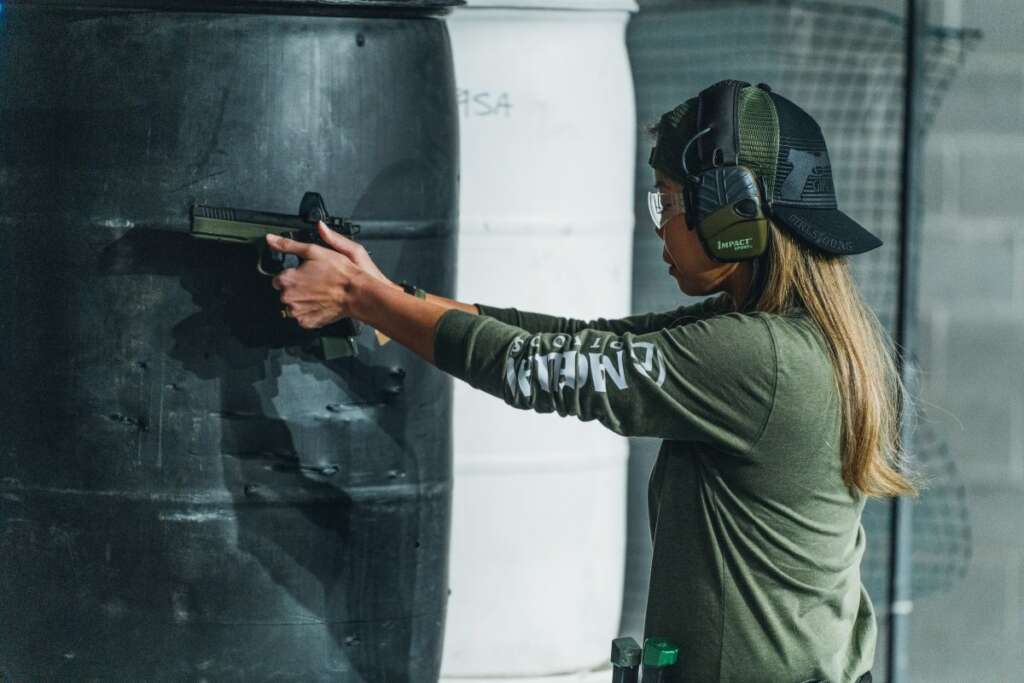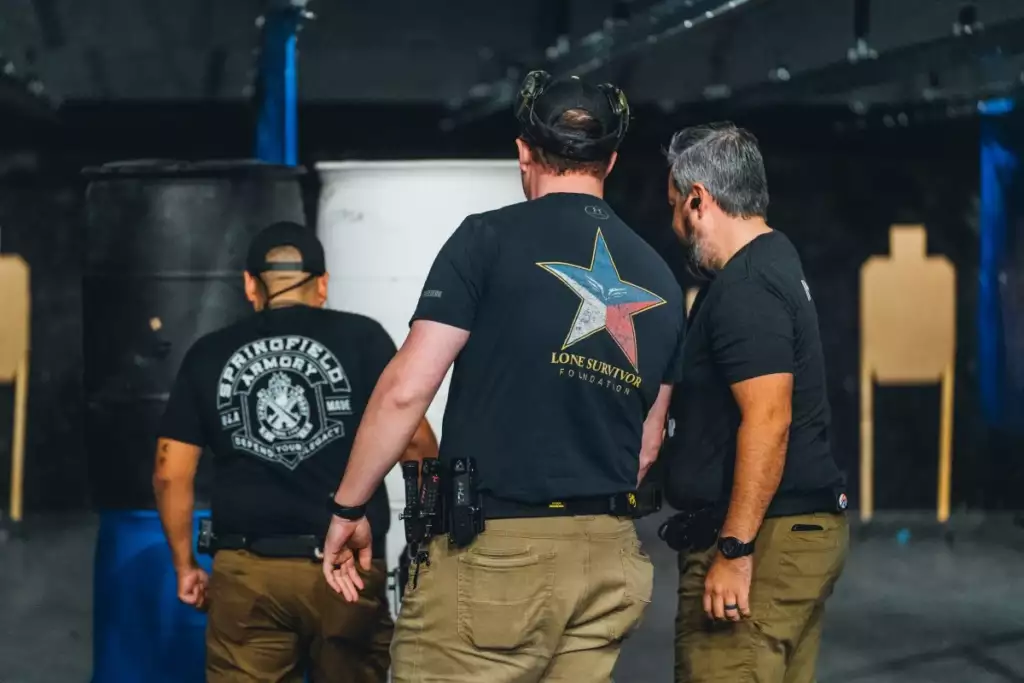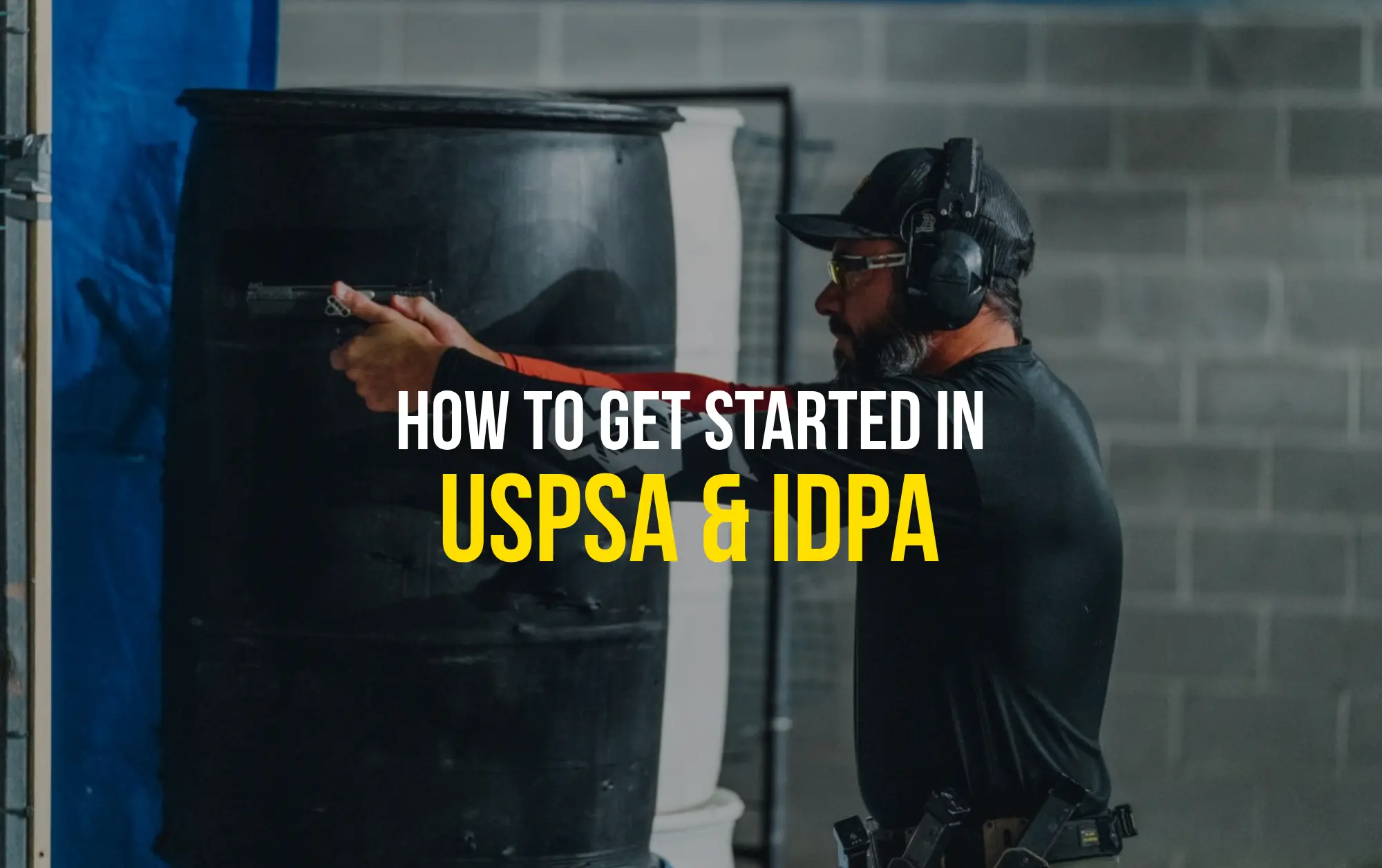We believe that the real pleasure in shooting comes from the profound sense of achievement. And what better place to experience it than on the shooting stage? Competitions push participants to test and improve their abilities continuously like nothing else. So, in this post, we will give you some competitive shooting tips that will eventually help you get into competitive shooting prepared and confident. Instead of offering broad advice, we’re honing in on a particular type of competitive shooting – practical shooting. Let’s get started.
What Practical Shooting Competitions Are There
At our shooting range, we regularly host two practical shooting competitions (aka dynamic, speed, or action shooting) – IDPA and USPSA matches. These competitions are designed to test not only shooting accuracy and speed but also dynamic problem-solving skills under pressure.
The IDPA (International Defensive Pistol Association) focuses on using practical handguns and holsters in concealed carry matches, aiming to simulate real-world self-defense situations. This makes IDPA competitions particularly appealing to those interested in self-defense training.
There’s also the IPSC (International Practical Shooting Confederation), but unlike IDPA, it does not require concealed carry, and it offers competitions around the globe, allowing for a wide variety of scenarios and settings.
USPSA (U.S. Practical Shooting Association) competitions, particularly known for their 3-gun matches, bring together different firearms—rifles, pistols, and shotguns—on the same course. USPSA disciplines are ideal for those who like run-and-gun kind of experience.
So, when choosing between IDPA vs USPSA pistol shooting competitions, consider what you like more – competitions that emphasize real-world self-defense scenarios and practical use of CCWs or a more athletic and speed-oriented approach of the USPSA.
Practical Shooting Competitions Tips: How to Prepare for & Get Better in USPSA/IDPA
Tip 1 - Have a Training Plan
To get better in practical shooting competitions (and in any shooting competition for what matters), it’s important to have a good training plan. Instead of just repeating entire stages, isolate and work on individual skills identified from previous performances.
For instance, practice turning and moving in different directions—left, right, or backward—while keeping your firearm pointed safely. Regularly practice drawing and reholstering as well as the end safety sequence (drop the magazine, clear the chamber, slide forward, hammer down, and holster).
You can also make great progress with dry-fire practice at home.
Tip 2 - Get the Right Firearm

The gun you choose depends on the division you plan to compete in. Within practical shooting, divisions such as Open, Limited, Production, Carry Optics, Single Stack, PCC, and Revolver offer various opportunities for shooters to match their skills and preferences.
For beginners, the USPSA Production Division, IDPA Stock Service Pistols, or IDPA Compact Carry Pistol is an excellent starting point because it allows you to use just a “normal” gun without investing in optics and accessories.
For those seeking a challenge, the USPSA Limited division is perfect as it doesn’t allow red dot sights and compensators and requires a minimum caliber of .40S&W to make a major power factor. And for those who love upgrading and customizing their guns, there is the USPSA Open division where you can play with accessories however you like.
The most popular competition shooting pistols include CZ, Glock, Sig Sauer, Staccato, and S&W.
Tip 3 - Get Competition-ready Optics and Zero It Correctly
Next, optics. Basically, you need a reliable and durable red dot that can deliver a clear picture. Consider red dot sights designed for competition use, such as the Holosun 507C with 3 reticle options (a dot, circle, and dot-and-circle) or a more advanced 507Comp boasting 6 reticle options. While Holosun is getting popular, the Trijicon SRO remains a gold standard.
When zeroing your optics, remember that practical shooting doesn’t need the same pinpoint accuracy as precision shooting. So don’t overthink and zero at a middle distance, like 17-18 yards. Don’t forget to check your zero at different distances—like 7, 15, 25, and 35 yards—to learn how to adjust for different targets.

Tip 4 - Know Your Ammo
Unlike precision shooting, which demands at least 1MOA accuracy, practical competitions require ammo that cycles efficiently through your firearm. Pay attention to how different bullet weights affect your pistol’s recoil and handling. Consistency is important, so try several brands to see what works best with your firearm.
Many experienced shooters handload their ammo, especially in divisions like USPSA Revolver and Open, where custom loads prevail. This gives more control, and you can even qualify for different categories with the same bullet diameter. For example, in Open division, you can make major with 9mm only if it’s loaded hot.
This is where we need to touch on the scoring system, particularly the “power factor”. The power factor is calculated by multiplying the bullet weight by the velocity and then dividing by 1,000. Basically, PF reflects the recoil impulse and classifies ammo into Major and Minor categories. These categories affect scoring, as shots fired with a higher power factor (Major) might score higher in certain situations compared to those with a lower power factor (Minor), even if the accuracy is the same. This system encourages a balance between the qualities of shooters, as higher power can mean more recoil, affecting accuracy and speed.
Tip 5 - Don't Focus on Timer

It’s easy to become fixated on the timer. However, you better focus on analyzing your stage and planning a good strategy. It’s not easy, especially for beginners, but eventually, this skill will shave a few seconds of your time even if your shooting speed and accuracy don’t improve.
During the match, start by checking the stage description. Note the targets and find them outside the free-fire zone. Make a walkthrough to visualize your movements – how you set up in positions, approach cover, and transition between targets. Focus on your position instead of shooting on the move. Decide where to take your shots, move between those spots, and try to shoot everything you can see from each spot.
Tip 6 - Check for Updates to Avoid Penalties
Well, it’s all in the title. Make sure to get the latest rule book for your discipline and review it before competitions to avoid penalties.
Tip 7 - Turn to your Range/Safety Officer for Help
When you enter practical shooting competitions for the first time, your Range/Safety Officer (RO or SO) is a great resource. First of all, let the staff know you’re new, and feel free to ask questions about the rules or safety. During the match, let the SO guide you at each stage to make sure you follow safety standards, especially when loading and unloading. Also, repeat the course of fire to the SO to ensure you understand. Remember, they are there to help you learn, so stay positive, follow their advice, and you’ll perform better and more confidently.
Tip 8 - Just Sign Up and Go Do It
Everyone starts as a beginner, so don’t let nerves hold you back. Focus on safety and good sportsmanship. It’s okay to be at the bottom of the scoreboard at first; what’s important is being a respectful participant. Your first event will help you gain confidence and improve your skills as well as identify areas for improvement.
At GRITR Range, conveniently located right in the center of the DFW metroplex, we regularly hold USPSA and IDPA pistol shooting competitions. Check out our calendar for upcoming matches or subscribe to our newsletters to stay in the loop on all our range events.
Other Shooting Competitions: An Overview
The shooting sports scene includes a wide variety of competitions beyond practical shooting. For precision shooting fans, the focus is on accuracy, and testing skills to hit targets exactly. Events like the NRA Hunter Marksmanship start with easy platforms like BB guns and air rifles and progress to small-bore and high-power rifles, pistols, and shotguns. NRA High Power Rifle matches add time limits and different shooting positions like standing, sitting, or lying down, with distances reaching up to 600 yards.
For those into long-range shooting, the Precision Rifle Series (PRS) and the National Rifle League (NRL) offer exciting challenges. Handgun enthusiasts can try the NRA Conventional Pistol, or bullseye shooting, which requires aiming one-handed at faraway targets.
Cowboy Action shooting lets you step back into the Old West. Participants dress in period clothing and use traditional guns, shooting at steel targets while having fun with others.
Shotgun lovers can participate in events that mimic hunting, like Trap, Skeet, and Sporting Clays, which simulate bird flight paths and help improve reflexes and aim.

One Response
I wish I could find it enjoyable. I did… many years ago. Working class folks with LIMITED tine and money for practice and occasional competition. You would win this month, and maybe I would win next month. Well that is all gone. T-shirts and blue jeans got replaced by jerseys with manufacturers/sponsors names and shorts. People that shoot 52 weekends a year, 3 times during the week, and in between sit at a reloading bench. It went from friendly to ruthless. I can see why there are 35,000 USPSA members out of 110 million gun owners. If you can enjoy it, good deal.